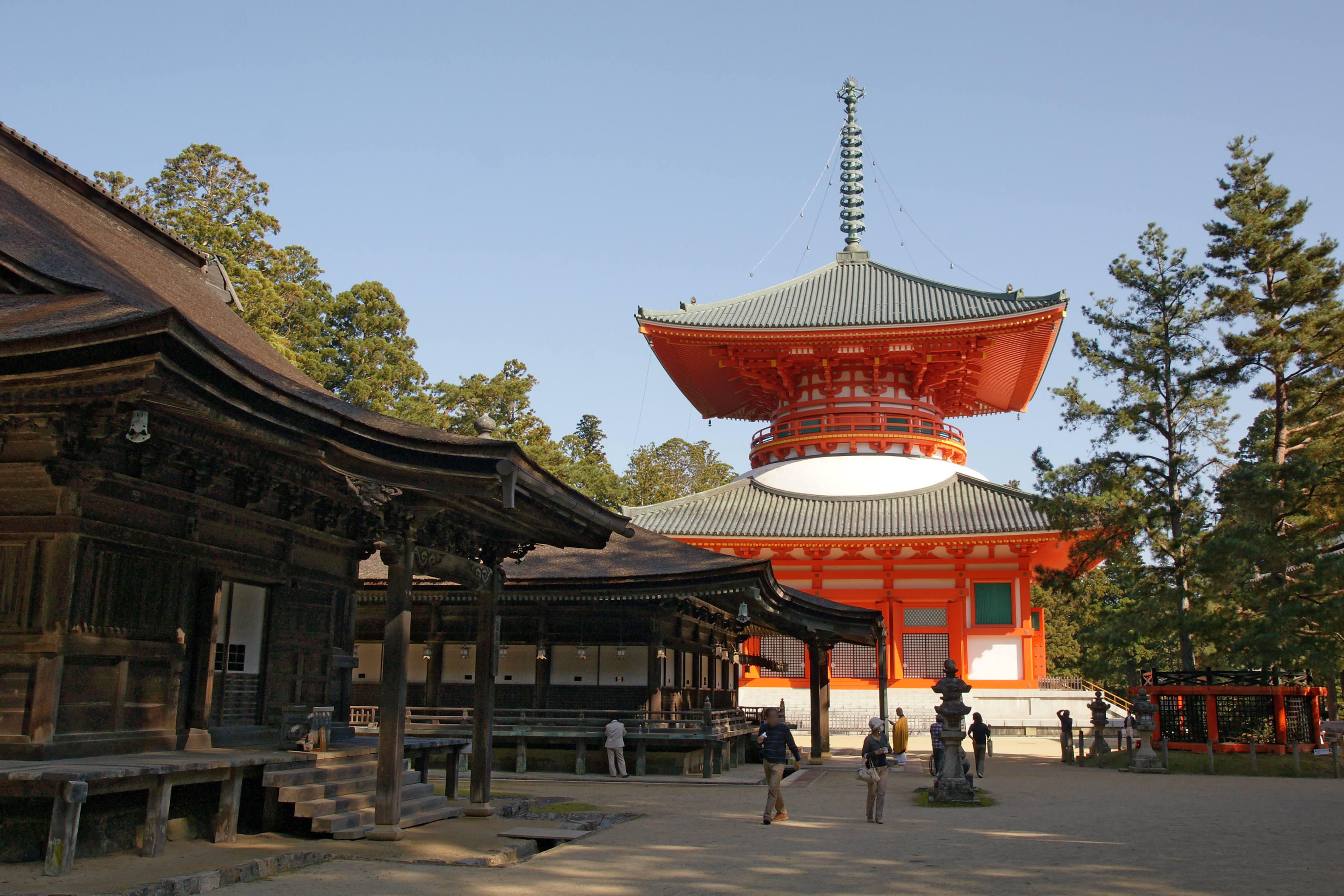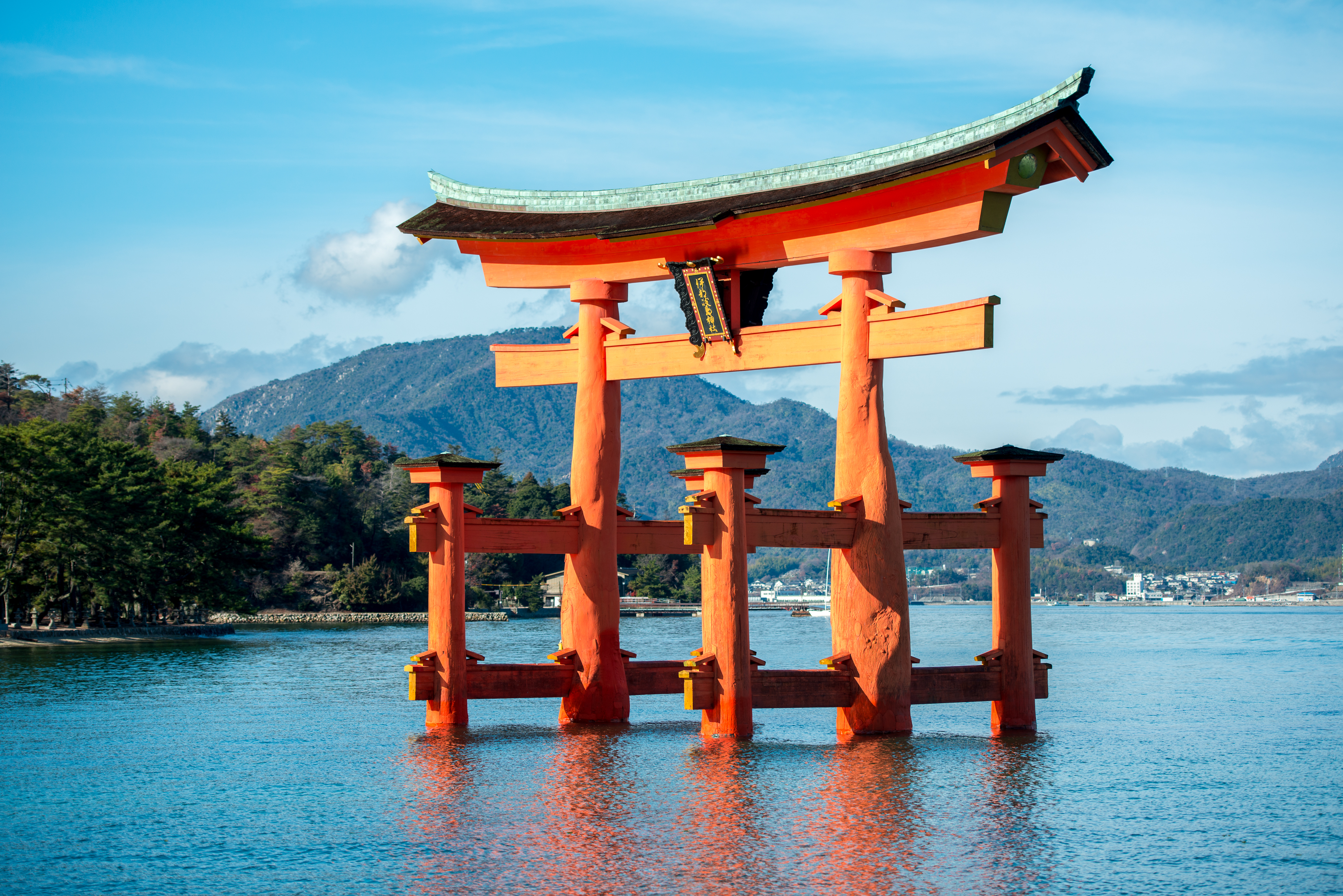|
Shingon Buddhism
is one of the major schools of Buddhism in Japan and one of the few surviving Vajrayana lineages in East Asian Buddhism. It is a form of Japanese Esoteric Buddhism and is sometimes called "Tōmitsu" (東密 lit. "Esoteric uddhismof Tō-ji"). The word ''shingon'' is the Japanese reading of the Chinese word ('), which is the translation of the Sanskrit word mantra. The Zhēnyán lineage was founded in China (c. 7th–8th centuries) by Indian vajrācāryas (esoteric masters) like Śubhakarasiṃha, Vajrabodhi and Amoghavajra. These esoteric teachings would later flourish in Japan under the auspices of a Buddhist monk named Kūkai (, 774–835), who traveled to Tang China and received these esoteric transmissions from a Chinese master named Huiguo (746–805). Kūkai established his tradition at Mount Kōya (in Wakayama Prefecture), which remains the central pilgrimage center of Shingon Buddhism. The practice of the Shingon school stresses that one is able to atta ... [...More Info...] [...Related Items...] OR: [Wikipedia] [Google] [Baidu] |
Huiguo
Huiguo () (746–805) was a Buddhist monk of Tang China who studied and taught Chinese Esoteric Buddhism, a Vajrayana tradition recently imported from India. Later Huiguo would become the teacher of Kūkai, founder of Shingon Buddhism, a prominent school of Buddhism in Japan. Biography Huiguo was one of two Buddhist masters at Ximing Temple, the other being the Indian monk Prajñā. Huiguo began his study of Buddhism as a śrāmaṇera at age 9 under a senior disciple of Amoghavajra, a monk of the tantric tradition, eventually becoming a direct disciple. By age 22 in 766 CE, Huiguo was ordained as a monk and extensively studied the Womb Realm and Diamond Realm mandalas before being fully initiated into Vajrayana that same year by Amoghavajra. Succession In time, Huiguo's prominence attracted students from Korea, Central Asia and even Java Java is one of the Greater Sunda Islands in Indonesia. It is bordered by the Indian Ocean to the south and the Java Sea (a part o ... [...More Info...] [...Related Items...] OR: [Wikipedia] [Google] [Baidu] |
Culture Of Japan
Japanese culture has changed greatly over the millennia, from the country's prehistoric Jōmon period, to its contemporary modern culture, which absorbs influences from Asia and other regions of the world. Since the Jomon period, ancestral groups like the Yayoi and Kofun, who arrived to Japan from Korea and China, respectively, have shaped Japanese culture. Rice cultivation and centralized leadership were introduced by these groups, shaping Japanese culture. Chinese dynasties, particularly the Tang dynasty, have influenced Japanese culture throughout history and brought it into the Sinosphere. After 220 years of isolation, the Meiji era opened Japan to Western influences, enriching and diversifying Japanese culture. Popular culture shows how much contemporary Japanese culture influences the world. Identity There are two competing hypotheses that try to explain the lineage of the Japanese people. The first hypothesis proposes a dual-structure model, in which Japanese po ... [...More Info...] [...Related Items...] OR: [Wikipedia] [Google] [Baidu] |
Keizan
Keizan Jōkin (, 1268–1325), also known as Taiso Jōsai Daishi, is considered to be the second great founder of the Sōtō school of Zen in Japan. While Dōgen, as founder of Japanese Sōtō, is known as , Keizan is often referred to as . Keizan and his disciples are credited with beginning the spread of Sōtō Zen throughout Japan, away from the cloistered monastic practice characteristic of Dōgen's Eihei-ji and towards a more popular religion that appealed to all levels of Japanese society. Keizan founded several temples during his lifetime, most notably Yōkō-ji and Daihonzan Sōji-ji (founded on the Noto Peninsula and moved to Tsurumi-ku, Yokohama in 1911). Today Sōji-ji and Eihei-ji stand together as the two principal Sōtō Zen training centers in Japan. Biography Youth and Zen-training Keizan spent the first eight years growing up under the care of his grandmother, Myōchi (明智), who was one of Great Master Dōgen's first supporters on his return from China. Ke ... [...More Info...] [...Related Items...] OR: [Wikipedia] [Google] [Baidu] |
Soto Zen
Soto may refer to: Geography * Soto (Aller), parish in Asturias, Spain * Soto (Las Regueras), parish in Asturias, Spain * Soto, Curaçao, Netherlands Antilles * Soto, Russia, a rural locality (a ''selo'') in Megino-Kangalassky District of the Sakha Republic, Russia * Soto de Cerrato, municipality in Palencia Province, Spain * Soto de la Vega, municipality in León Province, Spain * Soto de los Infantes, parish in Asturias, Spain * Soto de Luiña, parish in Asturias, Spain * Soto del Barco (parish), parish in Asturias, Spain * Soto del Real, municipality in Madrid Province, Spain * Soto en Cameros, municipality in La Rioja, Spain * Soto la Marina, Tamaulipas, municipality in Mexico * Soto Street, in Los Angeles, California ** Soto (Los Angeles Metro station), located on Soto Street at the intersection with First St. * Soto y Amío, municipality in León Province, Spain Groups of people * So'to, indigenous people of the Amazon *Sōtō, the largest of the three traditional sects of Z ... [...More Info...] [...Related Items...] OR: [Wikipedia] [Google] [Baidu] |
Japanese Zen
:''See also Zen for an overview of Zen, Chan Buddhism for the Chinese origins, and Sōtō, Rinzai school, Rinzai and Ōbaku for the three main schools of Zen in Japan'' Japanese Zen refers to the Japanese forms of Zen, Zen Buddhism, an originally Buddhism in China, Chinese Mahāyāna school of Buddhism that strongly emphasizes Dhyāna in Buddhism, dhyāna, the Meditation, meditative training of awareness and equanimity. This practice, according to Zen proponents, gives insight into one's Buddha-nature, true nature, or the Śūnyatā, emptiness of inherent existence, which opens the way to a enlightenment in Buddhism, liberated way of living. History Origins According to tradition, Zen originated in ancient India, when Gautama Buddha Flower Sermon, held up a flower and Mahākāśyapa smiled. With this smile he showed that he had understood the wordless essence of the dharma#Buddhism, dharma. This way the dharma was transmitted to Mahākāśyapa, the second patriarch of Z ... [...More Info...] [...Related Items...] OR: [Wikipedia] [Google] [Baidu] |
Ritual
A ritual is a repeated, structured sequence of actions or behaviors that alters the internal or external state of an individual, group, or environment, regardless of conscious understanding, emotional context, or symbolic meaning. Traditionally associated with gestures, words, or revered objects, rituals also occur in non-human species, such as elephant mourning or corvid object-leaving. They may be prescribed by tradition, including religious practices, and are often characterized by formalism, traditionalism, rule-governance, and performance. Rituals are a feature of all known human societies. They include not only the worship rites and sacraments of organized religions and cults, but also rites of passage, atonement and ritual purification, purification rites, oaths of allegiance, dedication ceremonies, coronations and presidential inaugurations, marriages, funerals and more. Even common actions like handshake, hand-shaking and saying "hello" may be termed as ''rituals''. Th ... [...More Info...] [...Related Items...] OR: [Wikipedia] [Google] [Baidu] |
Shinto
, also called Shintoism, is a religion originating in Japan. Classified as an East Asian religions, East Asian religion by Religious studies, scholars of religion, it is often regarded by its practitioners as Japan's indigenous religion and as a nature religion. Scholars sometimes call its practitioners ''Shintoists'', although adherents rarely use that term themselves. With no central authority in control of Shinto, there is much diversity of belief and practice evident among practitioners. A polytheism, polytheistic and animism, animistic religion, Shinto revolves around supernatural entities called the (神). The are believed to inhabit all things, including forces of nature and prominent landscape locations. The are worshipped at household shrines, family shrines, and Shinto shrine, ''jinja'' public shrines. The latter are staffed by priests, known as , who oversee offerings of food and drink to the specific enshrined at that location. This is done to cultivate harmony ... [...More Info...] [...Related Items...] OR: [Wikipedia] [Google] [Baidu] |
Shugendō
is a syncretic Esoteric Buddhist religion, a body of ascetic practices that originated in the Nara Period of Japan having evolved during the 7th century from an amalgamation of beliefs, philosophies, doctrines and ritual systems drawn primarily from Esoteric Buddhism, local folk-religious practices, Shinto, mountain worship, and Taoism. The final purpose of ''Shugendō'' is for practitioners to find supernatural power and save themselves and the masses by conducting religious training while treading through steep mountain ranges. Practitioners are called or . The mountains where ''shugendo'' is practiced are all over Japan, and can span multiple mountains within one range such as the Ōmine mountain range with Mount Hakkyō and Mount Ōmine or the Ishizuchisan mountain range with Kamegamori and Tengudake. The ''Shugendō'' worldview includes a large pantheon of deities (which include Buddhist and Shinto figures). Some of the most important figures are the tantric B ... [...More Info...] [...Related Items...] OR: [Wikipedia] [Google] [Baidu] |
Tendai
, also known as the Tendai Dharma Flower School (天台法華宗, ''Tendai hokke shū,'' sometimes just ''Hokkeshū''), is a Mahāyāna Buddhist tradition with significant esoteric elements that was officially established in Japan in 806 by the Japanese monk Saichō. The Tendai school, which has been based on Mount Hiei since its inception, rose to prominence during the Heian period (794–1185). It gradually eclipsed the powerful Hossō school and competed with the rival Shingon school to become the most influential sect at the Imperial court. By the Kamakura period (1185–1333), Tendai had become one of the dominant forms of Japanese Buddhism, with numerous temples and vast landholdings. During the Kamakura period, various monks left Tendai to found new Buddhist schools such as Jōdo-shū, Jōdo Shinshū, Nichiren-shū and Sōtō Zen. The destruction of the head temple of Enryaku-ji by Oda Nobunaga in 1571, as well as the geographic shift of the capital away from ... [...More Info...] [...Related Items...] OR: [Wikipedia] [Google] [Baidu] |
Hongaku
The moon reflected in water is a popular simile for enlightenment used by Dōgen in the '' East Asian Buddhist doctrine often translated as "inherent", "innate", "intrinsic" or "original" enlightenment in Buddhism">awakeness. This doctrine holds all sentient beings are already enlightened or awakened in some way. In this view, since all beings have some kind of awakeness as their true nature, the attainment of insight is a process of discovering and recognizing what is already present, not of attaining some goal or developing a potential.Stone, Jacqueline. 'From Buddha Nature to Original Enlightenment: "Contemplating Suchness" in Medieval Japan' in Mathes, Klaus-Dieter, and Casey Kemp, eds. ''Buddha Nature Across Asia''. Wiener Studien zur Tibetologie und Buddhismuskunde 103. Vienna: Arbeitkreis für tibetische und buddhistische Studien, University of Vienna, 2022. As such, people do not have to become Buddhas through religious cultivation, they just have to recognize that they ... [...More Info...] [...Related Items...] OR: [Wikipedia] [Google] [Baidu] |
Mandala
A mandala (, ) is a geometric configuration of symbols. In various spiritual traditions, mandalas may be employed for focusing attention of practitioners and adepts, as a spiritual guidance tool, for establishing a sacred space and as an aid to meditation and trance induction. In the Eastern religions of Hinduism, Buddhism, Jainism and Shinto it is used as a map representing deities, or especially in the case of Shinto, paradises, kami or actual shrines. Hinduism In Hinduism, a basic mandala, also called a '' yantra'', takes the form of a square with four gates containing a circle with a centre point. Each gate is in the general shape of a T. Mandalas often have radial balance. A '' yantra'' is similar to a mandala, usually smaller and using a more limited colour palette. It may be a two- or three-dimensional geometric composition used in '' sadhanas'', puja or meditative rituals, and may incorporate a mantra into its design. It is considered to represent the abode ... [...More Info...] [...Related Items...] OR: [Wikipedia] [Google] [Baidu] |





